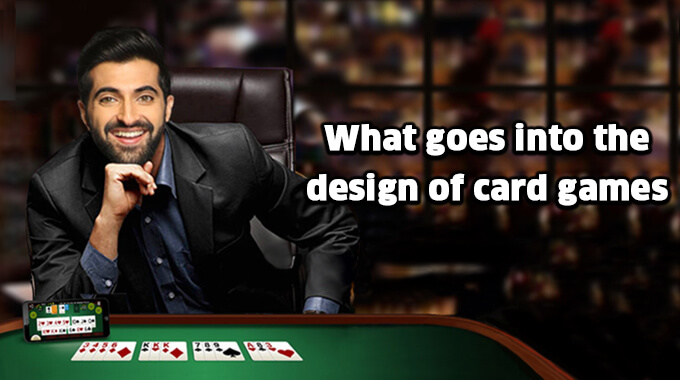What Goes Into The Design Of Card Games
Compared to the multitude of video game genres out there, most people would consider card games to be among the easiest to design and maintain. But contrary to popular belief, while most video games are constructed out of pure fantasy and thus can have any format to them, card games like online rummy have a set format and a clear distinction. This makes it more challenging for game designers to come up with layouts that are not only aesthetically appealing but stand out as well.
Apart from that, there’s a need to design a perfect platform that incorporates both the amount of skill required as well as the element of ‘luck’ in games like poker. Translating the skill into a game is not very difficult, but translating the unpredictable outcomes into a programmable scenario is a fine line that must be trodden with precision, lest the game statistics should become skewed. Moreover, the layout of the game, as well as the user interface, must not only be aesthetically appealing but be on point pragmatically as well.
In fact, designing card games is one of the most difficult of all gaming genres. Here are a few points that go into designing the layout of card games:
- Spatial distribution: Spatial distribution for a user interface is one of the most important factors to consider. It means distributing all the buttons, the active gameplay space, and other information (active and passive) in an arrangement where all of it can be easily processed by the end user while not looking cluttered or too spaced out. Most games that cannot manage this aspect tend to falter on the gaming experience. Indeed, many great games garnered average-to-poor reviews solely because they did not concentrate enough on this critical aspect.
- Visual hierarchy: Visual hierarchy means the order in which elements are presented for viewing; this implies the importance of one element over another. This relies heavily on how the human eye perceives objects. After spatial distribution is managed, all the components present must further be arranged in such a manner that the most important element catches the eyes first. So critical game information must be placed ahead of add-ons and promotional offers. The user options within the game must also be prioritised. Basically, the aim is to create as seamless a blend between the artificial environment for playing card games and the real environment they are played in.
- User interface: This is the meta-quality that spatial distribution and visual hierarchy fall under. User Interface is important for all video games, but it is absolutely critical for card games since the user interface is primarily what card games are all about. UI aids a player in selecting the choices they can make for the game and create a powerful visual representation of the real game experience while providing the user with a steady stream of data to process. Not only that, there is an in-game user interface as well, which deals with immediate game choices and options (basically the screen that pops up when you pause a video game), and which has to be created considering what is critical to the card game and what can be added to fully recreate the real experience of playing that card game. This is especially true for interactive card games such as rummy or poker, which have multiple variants.
- Font and colour: The three points discussed above are implemented in a variety of ways; the most crucial of them being typeface and colour. The right font can ensure importance or ensure that the information almost merges with the background. Colour is coded within us to evoke certain emotional reactions (blue is considered soothing and red aggravating). Colour-coding options and possibilities are a good way to enhance the gaming experience while conditioning the user to follow colour-coded clues within the gaming realm.
- Game mechanics: Being a vast field with many answers, we restrict game mechanics here to the mechanisms of the game that we see (and not the inner workings of the game itself). For example, dealing the cards in a game of Indian rummy or revealing cards in a game of blackjack can be made to effect a realistic character, an artistic character, or even a comical one, to better suit the created gaming environment and to ensure a full immersion of the player within the game.
Designing a card game is far more complex than other games because it must mimic an environment that is essentially real while infusing ‘virtual’ elements such as artistic design, gameplay mechanics, and a connected online environment. Challenges aside, today, multiple online card gaming portals have not just managed to do a great job but have gone further to create theme-based settings and rooms to provide variety to the niche genre.




